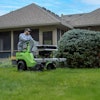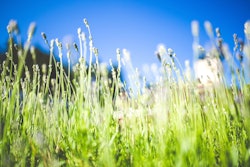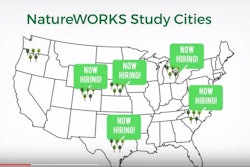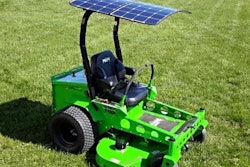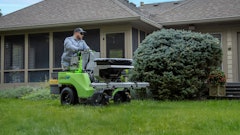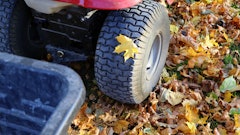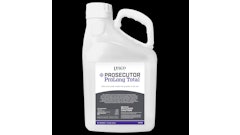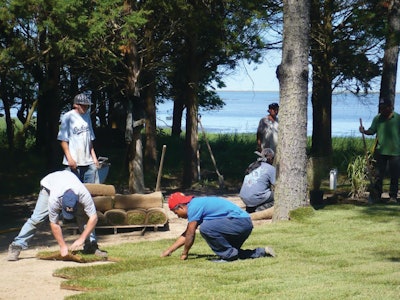
Connecting people to the natural world in urban settings requires turfgrass. Furthermore, turfgrass provides several vital ecosystem services, such as stormwater runoff collection, heat island effect mitigation, pollution and erosion control, and carbon sequestration. So, for those who say turfgrass serves no functional purpose—only an aesthetic one—they are wrong. However, those who say turfgrass can be managed more sustainably might be onto something.
Brian Horgan, Ph.D., is Associate Professor of Turfgrass Management at the University of Minnesota. His research interests focus on the fate and transport of pesticides and nutrients, water conservation strategies, and low-input turfgrass systems. Horgan spoke on the topic of "Defining Sustainable Turfgrass Systems" at the fifth-annual Lawn Care Summit in Nashville on January 28.
"Demand for turfgrass will continue to increase," Horgan told the Lawn Care Summit audience. That is an inevitability, he said, due to population growth and urbanization. As that demand for turfgrass increases, though, products used to manage turfgrass—including mowing equipment, fertilizers and pesticides, and irrigation systems—will become less available. Something has to give.
"If the ecosystem services of turfgrass are not enhanced by management—i.e. mowing, fertilization and irrigation—then the value of turf in urban environments will be questioned," Horgan said. Therefore, the more efficient and sustainable management of turfgrass is becoming more and more important now, and will be critical in the future.
"Turfgrass landscapes must represent a balance," Horgan pointed out, adding that landscape managers should balance inputs with desired end results. In other words, the goal should be to develop turfgrass management methods that require fewer energy inputs—without hindering the positive impact turfgrass has on the environment.
A Systematic Approach via Baby Steps
Irrigation. Did you know that turfgrass is the most-irrigated crop in the U.S., even surpassing corn by 3:1? That's a big reason why water conservation should be foremost in the minds of all landscape contractors, not just irrigation specialists.
"The future is about remote sensors," Horgan said in reference to the infrared technology that can detect water stress from visual systems. The normalized difference vegetation index (NDVI) identifies things like hot spots, bare soil and stress. "Remote sensors can pick up things before the human eye can, if it even can," Horgan said.
That's the technology of tomorrow. For now, the more common ET (evapotranspiration) controllers and soil moisture sensors can be put to better use. "You can also go archaic," Horgan reminded. You can put a pan out behind the shed on a property to measure the rate of water loss, which can help you determine how much water needs to be replaced on a daily basis. As a general rule, you'd take the amount lost x 0.8 to determine irrigation needs.
Fertilization. Some municipalities and states have moved to limit or completely ban the use of phosphorous and/or nitrogen. Not necessarily a good move. "Depriving turf of food doesn't help matters," Horgan pointed out. His testing has shown significant leaching when high levels of phosphorous were applied, but also when none was applied. Nutrient loss can lead to thinning thatch, which can result in increased leaching. "A better approach is to conduct a soil test to determine if phosphorous is needed," Horgan said. Then, feed the turf when it is growing.
Aeration. Aerating is an important component to an overall lawn care program. You have a choice between hollow-tine and solid-tine aerating equipment. "Tests show 55% less water runoff when you use a hollow tine," Horgan explained. Thus, you'll also experience less nutrient loss.


